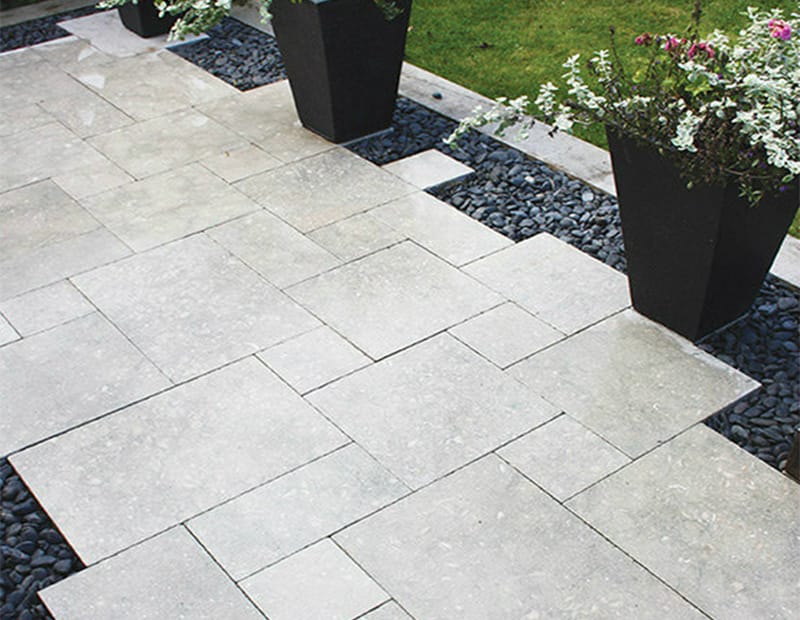Vitrified paving, more commonly known as porcelain paving, has become increasingly popular across homes and gardens in the UK because of its exceptional qualities.
Vitrified paving flags are made from clay that’s heated and cooled in a specific way. These tiles absorb little to no moisture, less than one per cent, which makes them excellent for use in a garden. This characteristic means that algae and moss find it nearly impossible to grow on the surface, so vitrified paving requires hardly any cleaning and won’t become slippery in the rain.
Its nearly waterproof surface could also make it less vulnerable to flaking or delamination. Delamination is a common defect in ceramic tiles. It’s the presence of air that becomes trapped during pressing and could cause the tiles to move or crack after they’ve been installed. With vitrified paving, there’s a lower chance of this happening.
Vitrified paving slabs are exceptionally strong and robust, which is why they’re perfect for heavy-traffic, outdoor spaces. This material is also resistant to frost, anti-slip, resistant to cleaning materials, extremely durable and perfect for indoor or outdoor use. All of these benefits demonstrate why its popularity has increased so much in the last few years.
Now you know what vitrified paving is, but what does vitrified actually mean and what are vitrified paving slabs made of?
What does vitrified mean?
To vitrify is ‘to convert or be converted into glass’, usually by exposure to heat.
Vitrified, therefore, refers to the way in which an object has been made. Vitrification is achieved by heating specific materials until they turn to liquid. This liquid is cooled rapidly so that it bypasses the glass transition and instead forms a vitrified solid.
It is this process that gives vitrified materials, or porcelain, their glasslike quality. When porcelain is held up to the light, it’s almost translucent.
What is vitrified paving made of?
Ceramic tiles are usually made from clay and quartz sand. Porcelain or vitrified paving is made with a purer, denser form of clay and is treated at a higher temperature, which is what gives it such a strong structure. Vitrified tiles may also be heated for longer to ensure that almost all the water is removed. During vitrification, parts of the clay melt and mullite crystals begin to grow. These tighten the whole structure. It is these crystals combined with the high temperatures that make vitrified paving so hard wearing.
Vitrified paving is usually white or cream and this is because of the addition of kaolin during the manufacturing process. Kaolin is a white clay mineral that can be found all over the world, including Vietnam, Bulgaria, France, the UK, India, Germany, South Korea, South Africa and the United States. It occurs in particularly moist soils. The clay is usually heated to 1,000°C but with the addition of kaolin, its melting point can increase to 1,800°C.
Vitrified paving can be more difficult to install because it’s so hard and durable. Its density makes it quite hard to cut with a tile cutter, especially if rounded edges are a requirement. If you want vitrified paving installed in your garden, it could take longer to install and you may be more limited in terms of the shape or design you can have.
When choosing your porcelain paving you should consider buying a brand that you can trust. Armstrong Supplies have teamed up with Paving Experts Brett Landscaping to offer a wide range to suit all tastes and budgets.
Vitrified paving not only looks stunning but it’s one of the most durable materials you can have in your garden. If you want a paving area to stun your guests, vitrified tiles should be something you consider.




